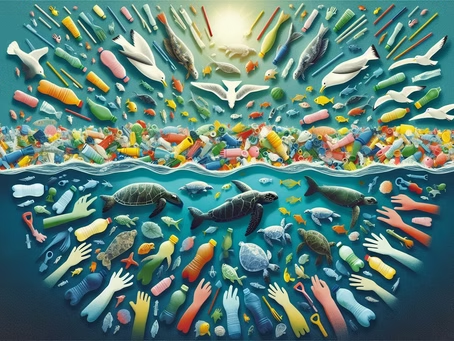Introduction
Marine plastic pollution poses a critical threat to ocean ecosystems, biodiversity, and human well-being. With millions of tons of plastic entering the seas each year, the consequences ripple across food chains, economies, and cultures. This article examines the lifecycle of plastics, their impacts, chemical threats, and emerging solutions that can guide us toward sustainable ocean stewardship.
Key Takeaways
- Plastic pollution harms ecosystems, marine life, and human health for centuries.
- Innovative cleanup systems harness ocean currents to capture floating debris.
- International policy frameworks and governance are vital for global progress.
- Community involvement and education help shift behaviors and reduce waste.
- Technology and long-term strategies are essential to address future challenges.
The Problem of Plastics in Our Oceans
The Lifecycle of Marine Plastics
Plastics persist for centuries, fragmenting into microplastics instead of decaying. Their lifecycle follows a troubling path: production, use, disposal, fragmentation, and ingestion by marine life. Effective waste management through recycling, secured landfills, and alternative disposal is critical but often overwhelmed by the sheer volume of waste.
Impacts on Marine Life and Ecosystems
- Oil spills suffocate habitats and marine species.
- Nutrient runoff creates algal blooms and dead zones.
- Ocean acidification weakens coral reefs and disrupts biodiversity.
These disruptions threaten both marine ecosystems and human communities that rely on ocean resources for survival and cultural identity.
The Chemical Threat Beyond the Debris
Beyond visible plastics, toxins from spills, runoff, and industrial waste accumulate in the food chain. They degrade water quality, disrupt habitats, and pose long-term ecological risks. Addressing chemical threats requires strict regulations, effective waste systems, and innovative cleanup methods.
Key Pollutants: Beyond Just Plastic
Chemical Contaminants
Pesticides, heavy metals, and pharmaceuticals impair growth, reproduction, and survival in marine life. These pollutants spread widely through ocean currents, turning even remote areas into toxic zones.
Oil Spills
Recurring spills suffocate ecosystems, kill wildlife, and disrupt reproductive cycles, with effects lasting for decades. Global collaboration is crucial to prevent and mitigate these disasters.
Microplastics
Small but pervasive, microplastics harm marine life and infiltrate the food chain. Monitoring and reducing their presence is a pressing global challenge.
Innovative Solutions for Ocean Cleanup
Ocean Cleanup Systems
Floating barriers that follow currents collect debris without harming marine life. Captured waste can then be recycled or safely disposed of.
Recycling Innovations
- Reduce: Cutting plastic use at the source.
- Reuse: Extending product life through repair and repurposing.
- Recycle: Transforming waste into new materials.
- Recover: Waste-to-energy solutions for non-recyclables.
Autonomous Tech
AUVs and drones map pollution hotspots and provide real-time data for targeted responses. Public-private partnerships enhance monitoring and action.
The Future of Ocean Pollution
Predicting Patterns
AI and global networks improve forecasting, helping governments and organizations anticipate and address emerging pollution hotspots.
Technological Advances
Drones, smart monitoring systems, and biodegradable alternatives offer promise but must be paired with sustainable practices to be effective.
The Role of International Policy
Global agreements, bans on single-use plastics, and international cooperation shape comprehensive solutions that address pollution from production to disposal.
Community Involvement and Education
Grassroots initiatives, awareness campaigns, and school programs empower communities to reduce waste and adopt sustainable practices. Local success stories prove that small-scale action can ripple into global change.
Economic Implications and Opportunities
The Cost of Pollution
Tourism declines, fisheries collapse, healthcare costs rise, and cleanup bills reach billions annually.
Investing in Green Tech
Developing new materials and processes reduces waste while creating jobs and economic opportunities.
Economic Incentives
Subsidies, tax breaks, and financial aid encourage sustainable industry practices and pollution reduction worldwide.
Conclusion
Marine plastic pollution is a global crisis, but innovation, policy, and community action offer hope. By combining cleanup systems, recycling advances, education, and international cooperation, we can protect marine ecosystems and ensure a healthier future for both oceans an

